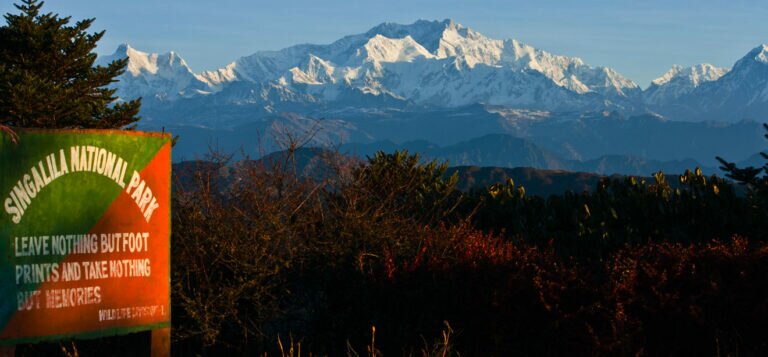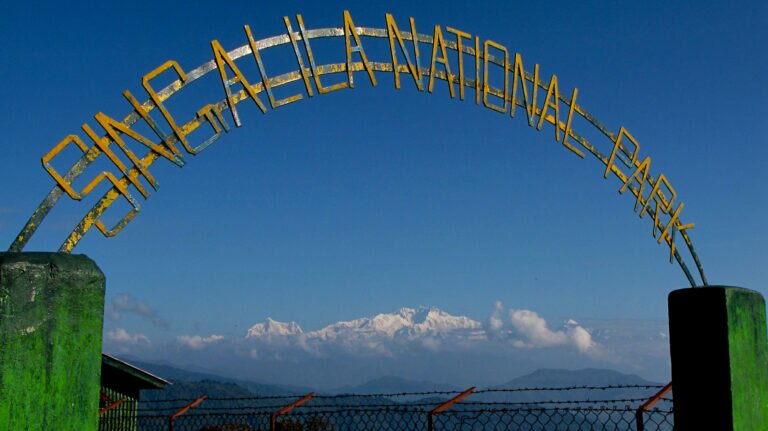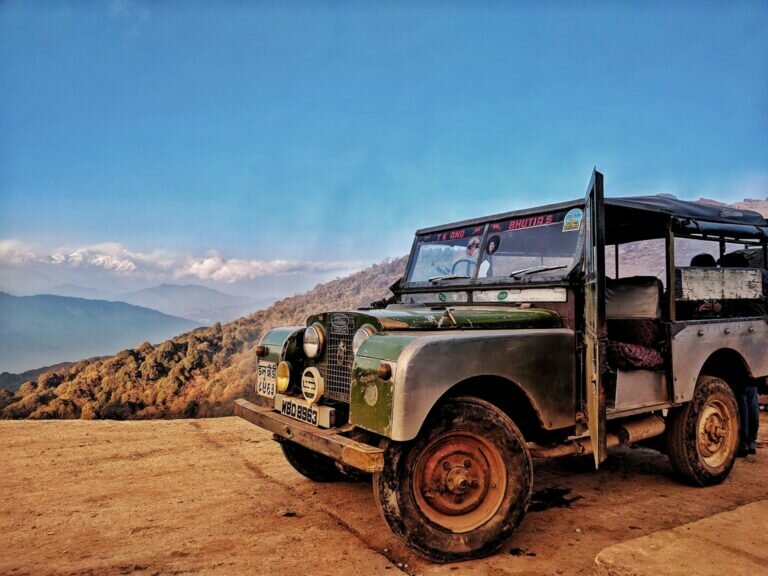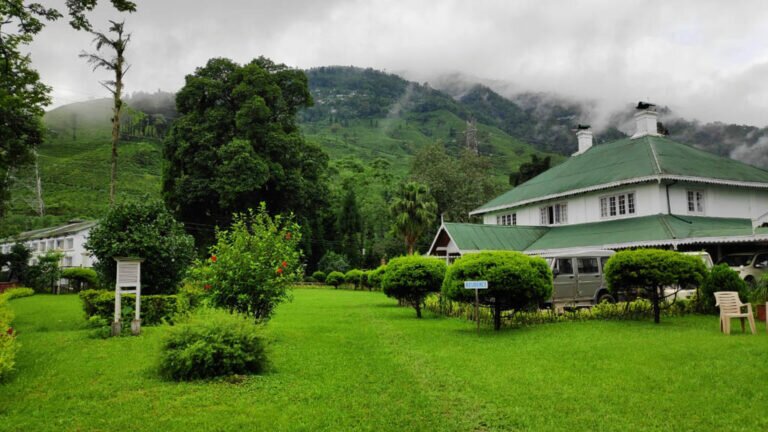A land of virgin rhododendron forests, alpine valley and rare species of animals and orchids. Located at the higher ridges of Darjeeling Himalayas (between 2400 m to 3650m) Singalila is the highest National Park in West Bengal. The park has an area of 78.60sq.km with mixed vegetation of Magnolia, Rhododendron, Oak, Pine Hemlock, Silver Fir, Juniper, Mailing Bamboo, Buk, Kawla, Bhujpatra etc.
The Singalila Park also has a priceless collection of different species of rare orchids that adorns the forests. The Singalila Park is also very important for some most endangered species of animals. Exotic Red Panda and Himalayan Black Bear are the most important mammals found in Singalila National Park. Among the other majore species found in the park are leopard, serow, pangolin, barking deer, boar etc. The park has a variety of birds such as Kaleej pheasants, tragopan, Munal, pigeons, doves, sibia, minivet, magpie, cuckoo, hornbills, and a large number of migratory birds.
Apart from its rich bio-diversity Singalila National Park is also famous for its stunning natural beauty with spectacular views of Himalayan peaks over the unspoiled stretches of virgin forests with blooming rhododendron and magnolia flowers. The park offers some spectacular treks through the alpine meadow and rhododendron forests. Sandakphu at 3636m is the highest point in Singalila National Park and is the most favored destination in Darjeeling Himalayas for trekkers through out the world. Phalut at 3605m is another popular trekkers’ destination in Singalila. Both the places offer some grandstand view of the entire Kunchenjungha snow ridges and even Mt Everest. The famous trek to Sandakphu and Phalut via Tumling (2900m) or Tonglu (3050m) – Gairibans(1900m) – Sandakphu ( 3636m)(35Km) – Phalut (3605m) (23kms) – Rimbik (2286m) originates from Maneybhanjan (2134m) at a distance of one and a half hours drive by road from Darjeeling.
History of the park
The park was declared a Wildlife Sanctuary in 1986, and was made an Indian National Park in 1992. The region had long been used as the trekking route from Manebhanjhyang to Sandakphu (the highest peak of West Bengal ), and Phalut.
Flora
Thick bamboo, oak, magnolia and rhododendron forest between 2000 and 3600 m cover the Singalila Ridge. There are two seasons of wildflower bloom – one in spring (March – April) when the Rhododendrons bloom, and another in the post monsoon season (around October), when the lower forests bloom (Primula, Geranium, Saxifraga , Bistort, Senecio, Cotoneaster and numerous orchids). Sandakphu is known as the “mountain of poisonous plants” due to the large concentration of Himalayan Cobra Lilies (Arisaema) which grow there.
Fauna
Mammals: The park has a number of small mammals including the Red Panda, Leopard Cat, Barking Deer, Yellow-throated Marten, Wild Boar, Pangolin and the Pika. Larger mammals include the Himalayan Black Bear, Leopard, Clouded Leopard, Serow and the Takin. Tigers occasionally wander into the area, but do not have a large enough prey base to make residence in these forests feasible.
Birds: The park is a birder’s delight with over 120 species recorded including many rare and exotic species like the Scarlet Minivet, Kalij Pheasant, Blood Pheasant, Satyr Tragopan, Brown and Fulvous Parrotbills, Rufous-vented Tit, and Old World babblers like the Fire-tailed Myzornis and the Golden-breasted Fulvetta. The park is also on the flyway of many migratory birds.
Reptiles and Amphibians: The endangered Himalayan Newt frequents the region, and congregates around the lakes of Jore Pokhri, Sukhia Pokhri and nearby lakes to reproduce. Jore Pokhri and Sukhia Pokhri are within 20 km of the park boundary, and are protected wildlife sanctuaries.
SINGALILA NATIONAL PARK AT A GLANCE
Place: Darjeeling district, West Bengal
Best time to visit: March to June & September to December
Nearest town: Darjeeling
Nearest Airport: Bagdogra- 90kms from Darjeeling. There are regular flights connecting bagdogra with other states.
Nearest Railheads: NJP is the main junction in Siliguri, which is 80Kms from Darjeeling. There are frequent train services connecting all the important cities in India.
Main Attraction: Red panda, birds, and Treks along the valleys of flowering Rhododendron and Magnolia forests
MAP OF SINGALILA NATIONAL PARK

Park-specific information
The two seasons to visit the park are in Spring (March – May) and post Monsoon (mid September to early December). The park is closed to tourists from June 16 to September 15 every year on account of the monsoons.
Important: All travelers need permission from forest department before entering Singalila Park. The foreign nationals need to show their identity at the Foreigners’ Check Post at Maneybhanjyang.




















 On behalf of the Gorkhaland Territorial Administration, I would like to express my warm welcome to tourists from around the globe to the GTA region.
On behalf of the Gorkhaland Territorial Administration, I would like to express my warm welcome to tourists from around the globe to the GTA region.